- News
- Reviews
- Bikes
- Accessories
- Accessories - misc
- Computer mounts
- Bags
- Bar ends
- Bike bags & cases
- Bottle cages
- Bottles
- Cameras
- Car racks
- Child seats
- Computers
- Glasses
- GPS units
- Helmets
- Lights - front
- Lights - rear
- Lights - sets
- Locks
- Mirrors
- Mudguards
- Racks
- Pumps & CO2 inflators
- Puncture kits
- Reflectives
- Smart watches
- Stands and racks
- Trailers
- Clothing
- Components
- Bar tape & grips
- Bottom brackets
- Brake & gear cables
- Brake & STI levers
- Brake pads & spares
- Brakes
- Cassettes & freewheels
- Chains
- Chainsets & chainrings
- Derailleurs - front
- Derailleurs - rear
- Forks
- Gear levers & shifters
- Groupsets
- Handlebars & extensions
- Headsets
- Hubs
- Inner tubes
- Pedals
- Quick releases & skewers
- Saddles
- Seatposts
- Stems
- Wheels
- Tyres
- Health, fitness and nutrition
- Tools and workshop
- Miscellaneous
- Tubeless valves
- Buyers Guides
- Features
- Forum
- Recommends
- Podcast
review
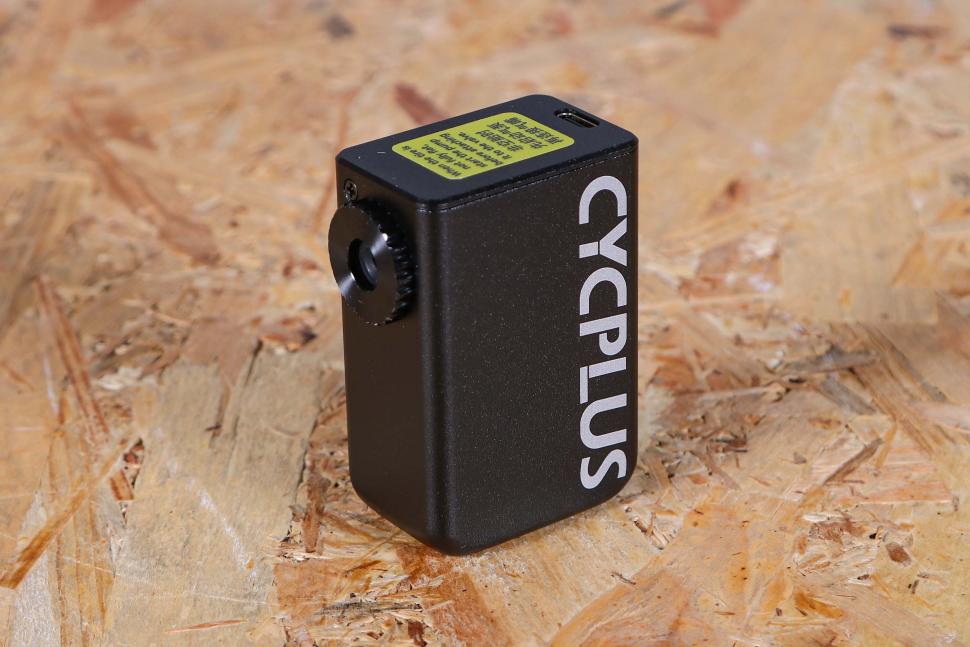 2023 Cycplus Tiny Pump CUBE.jpg
2023 Cycplus Tiny Pump CUBE.jpg£70.62
VERDICT:
Great little battery-powered mini pump that makes mid-ride reinflation a breeze
Tiny
Efficient
Easy to use
Limited battery life
Tiny Schrader valve component easy to lose
Weight:
117g
Contact:
At road.cc every product is thoroughly tested for as long as it takes to get a proper insight into how well it works. Our reviewers are experienced cyclists that we trust to be objective. While we strive to ensure that opinions expressed are backed up by facts, reviews are by their nature an informed opinion, not a definitive verdict. We don't intentionally try to break anything (except locks) but we do try to look for weak points in any design. The overall score is not just an average of the other scores: it reflects both a product's function and value – with value determined by how a product compares with items of similar spec, quality, and price.
What the road.cc scores meanGood scores are more common than bad, because fortunately good products are more common than bad.
- Exceptional
- Excellent
- Very Good
- Good
- Quite good
- Average
- Not so good
- Poor
- Bad
- Appalling
The Cycplus Cube Mini Pump is a great thing to have out on a ride. It makes reinflating and topping up tyres straightforward, and it's easy to fit into your tool kit. It's especially useful if you're running tubeless tyres.
For more traditional methods of inflation, check out our guide to the best bike pumps.
> Buy Now: CYCPLUS Tiny Electric Bike Pump for £67.99 from Amazon
At just 97g and 65x46x28mm the Cube (not an actual cube but we'll let that go) mini pump isn't a great deal bigger or heavier than a CO2 canister and head, or a mini pump. It'll easily fit in a seatpack, or jersey pocket, or tool bottle. It has an all-alloy body and feels nice and solid, even though it's very light.
It's a pretty simple bit of kit: there's a battery inside running a pump, and a button on the outside to turn it on. The pump runs a bit hot, especially at higher pressures, so you also get a silicone cover which will also help to protect it. Cycplus doesn't make any claims for it being waterproof but with the silicone cover on it should be fine so long as you don't drop it in a puddle.
Unlike some others I've seen and used, the Cycplus pump is both Presta and Schrader compatible; it involves switching around components, though, and there's a bit of the Schrader valve that you don't use for Presta, so I'm not sure what you're supposed to do with that if you want the option to use both valve types when you're out and about. If you're just going to be inflating Presta valves you could do what I did, and immediately lose it.
Using the Cycplus Cube Mini Pump
Using the Cube mini pump couldn't be simpler, really: put pump on valve, double click button, stop pump when tyre is hard a minute or so later. It's just a press fit, but you're not having to muscle the air into the tyre so it's easy to keep a nice tight seal. There's none of the jeopardy of a CO2 inflator – have I sealed the valve properly? Will I be able to remove my fingers from it after? – and none of the drudgery of a pump. It's a very pleasant experience.
Battery life, considering that the battery is a miniscule 300mAh, is good. I'm running 30mm tyres currently, and getting 70psi into one of those takes not much over a minute. You can inflate two tyres to that pressure on one charge, and the third time the Cube got to 40psi before it finally ran out of juice.
Further testing suggests that higher pressures, which make the pump work harder, are harder on the battery. Not a surprise, really. The pump will hit a maximum of 100psi but it's diminishing returns after about 80psi as the pump has to do a lot of work to go the extra mile. You'll only get one super-hard tyre out of a single charge. Out on the road, the first time you get a flat you'd probably just bung as much pressure as you need into it. The second time you might be a bit more judicious, in case you're really unlucky and you need a third go.
> How to choose the best bike tyre pressure – balancing speed, comfort and grip
For bigger tyres, which need more air but at lower pressure, you get a similar number of inflations: the pump is pushing more air, but not working as hard. Filling the 38mm tyres on my gravel bike to 45psi I got two full tyres and some of a third tyre again; it was the same with 47mm tyres to 35psi. If you assume you'll get two bites at it out on the road, you'll probably be right.
Depending on what sort of riding you do, you might carry a battery pack with you to charge your phone or your GPS along the way. Even if you don't, you could charge this pump a bunch of times even using one of those credit-card-sized batteries that fit in your wallet. Charging the Cube via its USB-C socket takes about 20 minutes from a 2.4A supply, so if you're having an especially bad day for punctures you could recharge it at a cafe stop.
The battery indicator gives you a traffic-light indication of what the charge state is, so it's easy enough to check before you head out, although best practice is to plug it in the night before to make sure, like it is with anything else (phone, GPS, lights) you're going to rely on. Green is over 80%, so if the light is green you've probably got two tyres' worth of charge.
Should you buy the Cycplus Cube Mini Pump?
I guess the main question is: would I rely on this pump? For a lot of riding, the majority in fact, I think I would. On a short blast at lunchtime I'll commonly only take a just-in-case CO2 canister, and there's no reason this pump couldn't replace that. For longer rides I'll usually take a manual pump, and often a CO2 canister as well to make the first (and hopefully the only) puncture a bit quicker. The Cycplus Cube can reasonably replace both: it's not quite as quick as a CO2 inflator but it's a hell of a lot quicker than a mini pump, and less likely to make your arms hurt or damage your valve. There's the increasing possibility as the rides get longer that I'd need it more than twice, but for anything over a few hours I'd generally take a USB battery pack anyway, which means I can deal with more or less unlimited punctures, within reason.
I think a pump like this is especially useful if you're running a tubeless setup. If you put a thorn through a tyre it'll often seal, but you'll lose some pressure. In that sort of scenario you don't want to waste a CO2 canister on topping up a tyre, so it's out with the pump for a few minutes of roadside upper body workout. With the Cube mini pump you can be back up to pressure in half a minute, with no effort. It's also useful if, say, you constantly forget that tubeless tyres lose pressure more quickly than tubed tyres and you're a mile down the road before you realise that one or other end is a bit on the soft side. I'm sure that's just me, though.
A mini pump like this is also a great thing to have when you're travelling. There's never room for a track pump, and reinflating your tyres out of the bike box at your destination is a proper chore with a mini pump. The Cube would make it easy, and it's tiny and simple to pack.
Value & conclusion
In terms of value, the Cycplus Cube is more than most mini pumps, and you can get a fair few CO2 canisters for 70 quid. We've reviewed the Fumpa Mini, which was well liked around these parts, but the Cube is more similar to the smaller nanoFumpa that's closer in price, but still a little more at £89.
There are others from the likes of Rockbros appearing too, which we haven't reviewed – the tiny electric pump is certainly on an upward trend. And for good reason. I've very much enjoyed using the Cube mini pump and I'm a convert to battery-based inflation on a ride.
> Buy Now: CYCPLUS Tiny Electric Bike Pump for £67.99 from Amazon
Could it be better? Well, I think the battery capacity is a bit stingy; a 600mAh version would double the run-time and add about 10g to the weight and very little to the cost. Given the choice between the two I'd certainly pick that, even if it was a tiny bit bigger.
And I'd like to see a convertible head that doesn't involve storing (losing) one of the pieces separately; we know this can be done, because it has, on basically every mini pump currently in existence.
Overall, though, I think the Cycplus Cube is a great addition to to your ride tool kit.
Verdict
Great little battery-powered mini pump that makes mid-ride reinflation a breeze
road.cc test report
Make and model: Cycplus Cube Mini Pump
Size tested: One Size
Tell us what the product is for and who it's aimed at. What do the manufacturers say about it? How does that compare to your own feelings about it?
From CYCPLUS:
Tiny E-Pump for Bike
Take the weight off your inflation game
Compact, Convenient and Ultra-Light
Crafted from a full aluminum alloy body and core, the tiny pump achieves the optimal balance of strength and lightness, resulting in an ultra-portable and compact design.
Small in Size, Big on Power
Equipped with a high-powered battery, delivering more power for efficient tire inflation.
With a full charge it can inflate two 700*25c tires from 0 to 80psi
Fast Inflation with Solid Aluminum Chamber
The brushless motor technology and durable alloy construction of this pump make it a powerful and reliable tool for inflating your tires
reach 80psi in just 80sec
Rate the product for quality of construction:
8/10
Rate the product for performance:
9/10
Rate the product for durability:
8/10
Rate the product for weight (if applicable)
9/10
Rate the product for comfort (if applicable)
8/10
Rate the product for value:
6/10
Tell us how the product performed overall when used for its designed purpose
Very well: pumped up tyres, easily.
Tell us what you particularly liked about the product
Tiny, efficient, easy to use.
Tell us what you particularly disliked about the product
Limited battery life, tiny Schrader valve component easy to lose.
How does the price compare to that of similar products in the market, including ones recently tested on road.cc?
Most of the packable electric pumps seem to be around the £70 mark in the UK, you can get cheaper ones from direct-from-China websites.
Did you enjoy using the product? Yes
Would you consider buying the product? Yes
Would you recommend the product to a friend? Yes
Use this box to explain your overall score
Very good: easier and less faff than either a mini pump or a CO2 canister.
About the tester
Age: 50
I usually ride: whatever I'm testing... My best bike is: Kinesis Tripster ATR, Merida Scultura, Dward Design fixed
I've been riding for: Over 20 years I ride: Every day I would class myself as: Expert
I regularly do the following types of riding: road racing, commuting, touring, club rides, general fitness riding, fixed/singlespeed, Mountain Bike Bog Snorkelling, track
Dave is a founding father of road.cc, having previously worked on Cycling Plus and What Mountain Bike magazines back in the day. He also writes about e-bikes for our sister publication ebiketips. He's won three mountain bike bog snorkelling World Championships, and races at the back of the third cats.
Latest Comments
- wtjs 4 hours 58 min ago
The excellent Garmin software and firmware is what you're paying for when you buy expensive Garmin gadgets. I'm a great fan and they're not going...
- David9694 6 hours 11 min ago
We constantly hear how cyclists film women and children in cars, whereas cars get used to to attempt to abduct women children off the street ...
- David9694 6 hours 21 min ago
Three taken to hospital after car overturns in Tivoli Road, Margate https://www.kentonline.co.uk/thanet/news/three-in-hospital-after-car-sma...
- David9694 6 hours 29 min ago
Emergency services called to incident in Verwood...
- chrisonabike 6 hours 53 min ago
Was in need of exercise so popped over for a look this evening. Short: it's a bodge - bollards would fix that *. Or rather (safer for all) a...
- chrisonabike 7 hours 12 min ago
... and of course "what does good look like" is not hard to experience - just over 100 miles away......
- Rendel Harris 7 hours 48 min ago
Actually any person, victim or even just a member of the public with no connection to the offence, can ask the Attorney Genertal to review a case...
- Steve K 8 hours 25 min ago
When I was cycling to every Crystal Palace match for a season back in 2016/17, my LBS gave my bike Palace coloured outers.
- Rendel Harris 9 hours 2 min ago
So let water and sweat in from the outside! I'm all for economic solutions and £30 for this case is just daft but not sure your alternative is a...








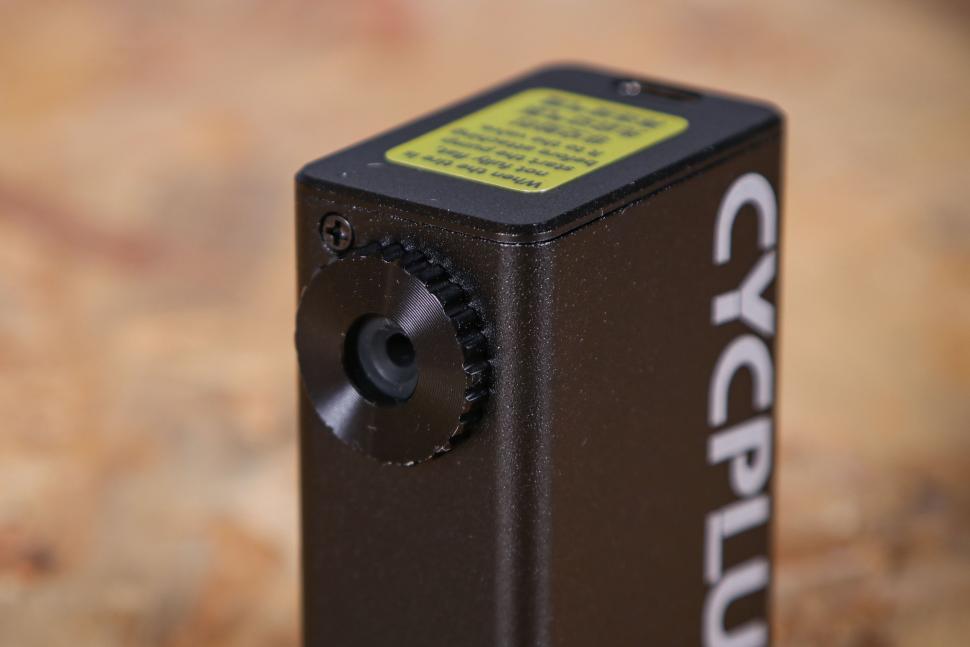
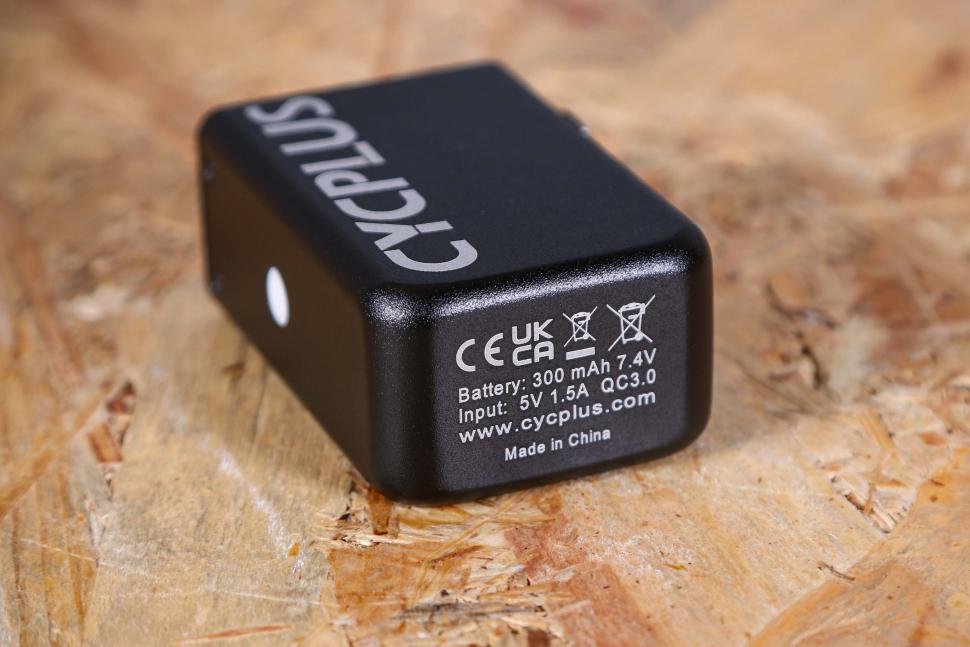

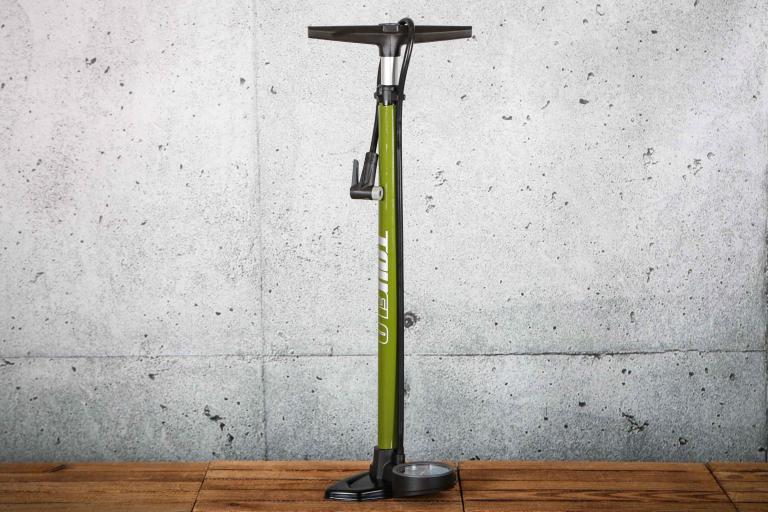
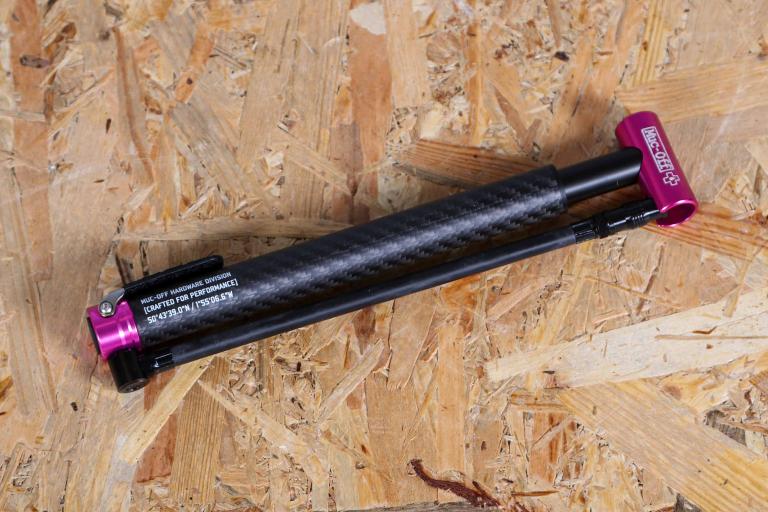
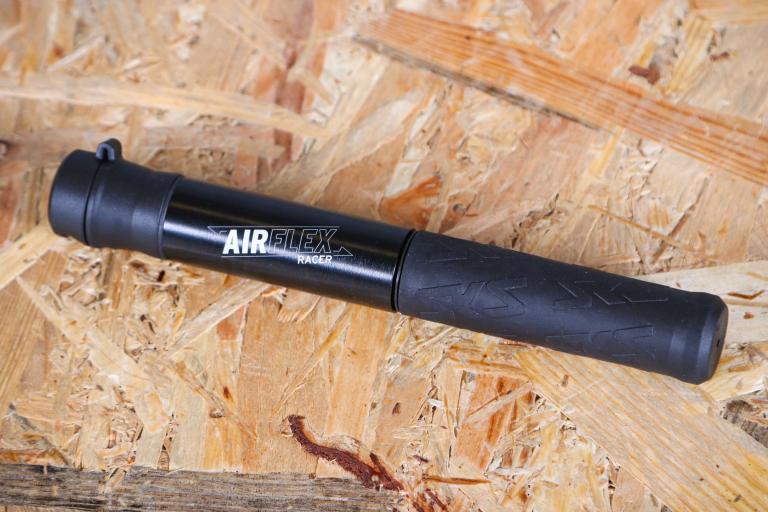

Add new comment
16 comments
Would this pop a tubeless ready tyre on ?
Just had a mystery puncture and when I got back to the bike, the tyre was flat and I couldn't get any air in at all. The sealant is not co2 compatible, so I used an air shot back home (and then added more sealant ).
No, I doubt it. It's not pushing enough air for that
I'd go as far as to say definitely not (having tried it, just out of interest).
AFAIK most sealants aren't "CO₂ compatible" as the coldness will cause the sealant to polymerise (i.e. turn into small rubber balls). However, if you're stuck somewhere, then it's well worth trying a canister, but position the valve at the top, 12 o'clock position so that the sealant will be pooled at the bottom. That should give the cold CO₂ a chance to warm up a bit before hitting the sealant.
My experience with tubeless is that the beads stay in place and require a lot of force to separate them from the rim. My current on-bike toolset now includes a small sealant bottle and a syringe to top up sealant. Also got the Effetto Caffélatex ZOT Nano Tyre Sealant which is an instant polymerization catalyser for Caffélatex sealant for when you've got a bubbling puncture that won't seal quick enough.
I've tried different sealants and this is the first that specifically mentioned no CO2.
I'm guessing I have an unlucky combo of rim and tyre and I was puzzled as to how the bead was not not in place.
some ebikes (with Fazua?) have USB output, so you could easily recharge this pump! that's sounds tempting.
The need to keep it topped up would make me a tad nervous, knowing how chaotic I can be. I also would allways be just a bit worried that I have more flats than this thing can pump.
So this is not for me.
Luckily I have no need for it anyway, as I found my sweetspot: a medium sized pump. It's a cheap thing from Decathlon, but the quality is perfectly fine, and the size is just right. It's small enough to fit in my frame bag, or strapped to my down tube with two simple straps. It's quite light, too. It is large enough however to make pumping a tire easy and relatively fast. No tired arms at all.
So it's always ready, requires no attention, it's easy to use, and cheap and light. Never change a winning team.
I'm struggling to see the cost benefit here. A small pump (in the back pocket) can deliver all the psi I need time and time again at a fraction of the cost.
Probably more useful for people with upper body mobility issues
Looks interesting, but one issue with battery powered devices is that if you don't use them in a while, they'll likely be flat when you go to use them. I can imagine that being an issue with an emergency pump as it'd likely not be used for months at a time.
How long does it hold its charge when not in use?
Yup, and the advice is, if you're going to leave a lithium ion battery unused for a few weeks or more, to leave it at a state of mid-charge, not fully charged.
I recently saw a lithium-ion lifetime/charging graph and was surprised to see that charging them fully drastically reduces their lifespan. The optimum trade-off between capacity and longevity was around 80%, so remember that when charging devices.
Is that an engineering tradeoff or for sales? ("Our battery goes up to 11!" - once...)
Engineering tradeoff. For sales, they're going to use the 100% capacity figures.
Here's the discussion: https://electronics.stackexchange.com/questions/623358/wouldnt-charging-a-lithium-battery-to-80-only-defeat-the-purpose-of-putting-th
Here's the graph
The optimum trade-off between capacity and longevity was around 80%
This is the figure I have been using on my Lenovo laptop and Moto (Lenovo!) phone for several years, but who knows which batteries it applies to. The laptop even has a voluntary setting where it won't charge over 80% even when it remains plugged in
These days I always carry a small powerbank for this exact reason. Although you need to check that too occasionaly!